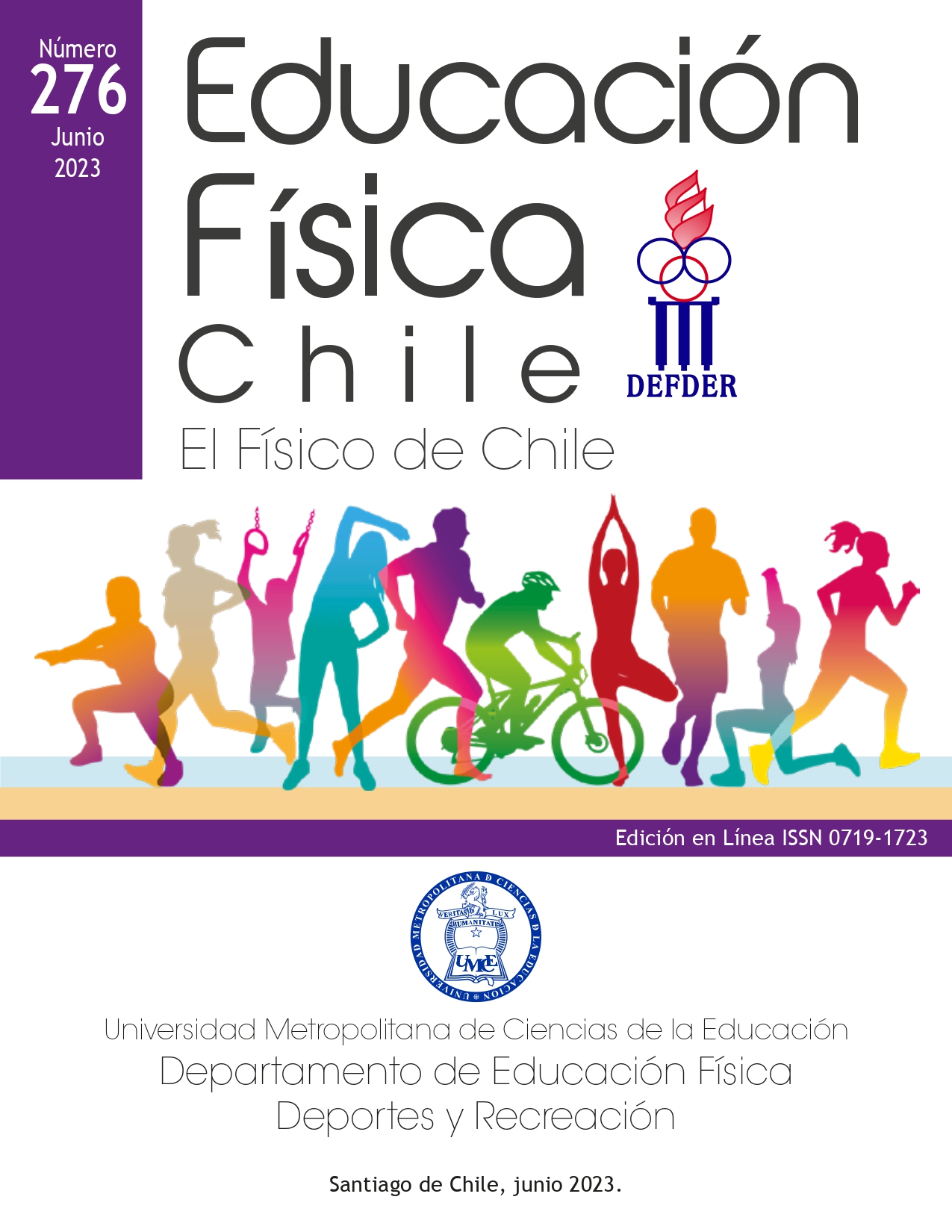Conteúdo do artigo principal
jul 10, 2023
Resumo
Objetivo: Comprobar la utilidad de 2 protocolos de saltos y la combinación de estos, como ejercicios potenciadores para mejorar la velocidad en 30 metros en atletas entrenados chilenos. Metodología: Experimento simple ciego aleatorio, medidas repetidas. Se evaluó la velocidad de los sujetos con fotocélulas en 30 metros después de un calentamiento base. Se realizaron 3 sesiones posteriores con protocolo calentamiento más protocolo Potenciación Post Activación (PPA) vertical, protocolo PPA horizontal y protocolo PPA combinado. Resultados: a través de la prueba ANOVA de un factor de medidas repetidas se comprobó que no existen diferencias significativas en protocolos de PPA (p=0,61) en velocidad media (m/s) en 30m. Ni en tiempos (s) de 30m (p=0,63), 20m (p=0,39) y 10m (p=0,39). Conclusión: Los protocolos PPA con saltos usados no tienen efecto estadístico sobre la velocidad de 30 metros. Las respuestas individuales dependen del uso o no de los saltos en su entrenamiento habitual.
Referências
De Oliveira J J, Harley Crisp A, Reis Barbosa C G, de Souza e Silva A, Júlio Baganha R, (2017). Effect of Postactivation Potentiation on Short Sprint Performance: A Systematic Review and Meta-Analysis. Asian J Sports Med. 8(4), e14566. 10.5812/asjsm.14566.
Hamada, T., Sale, D., MacDougall, J. and Tarnopolsky, M. (2000). Postactivation potentiation, fiber type, and twitch contraction time in human knee extensor muscles. Journal of Applied Physiology, 88(6), 2131-2137.
Healy, R. and Comyns, T. (2017). The Application of Postactivation Potentiation Methods to Improve Sprint Speed. Strength and Conditioning Journal, 39(1), 1-9.
Lesinski M., Muehlbauer T., Büsch D., Granacher U. (2014). Effects of complex training on strength and speed performance in athletes: a Systematic Review. Sportverletzung Sportschaden : Organ der Gesellschaft fur Orthopadisch Traumatologische Sportmedizin. 28. 10.1055/s-0034-1366145.
McBride, J., Nimphius, S. and Erickson, T. (2005). The Acute Effects of Heavy-Load Squats and Loaded Countermovement Jumps on Sprint Performance. The Journal of Strength and Conditioning Research, 19(4), 893.
Sale, D. (2002). Postactivation Potentiation: Role in Human Performance. Exercise and Sport Sciences Reviews, 30(3), 138-143.
Seitz, L., de Villarreal, E. and Haff, G. (2014). The Temporal Profile of Postactivation Potentiation Is Related to Strength Level. Journal of Strength and Conditioning Research, 28(3), 706-715.
Till, K. and Cooke, C. (2009). The Effects of Postactivation Potentiation on Sprint and Jump Performance of male academy soccer players. Journal of Strength and Conditioning Research, 23(7), 1960-1967.
Tillin, N. and Bishop, D. (2009). Factors Modulating Post-Activation Potentiation and its effect on performance of subsequent explosive activities. Sports Medicine, 39(2), 147-166.
Turner, A., Bellhouse, S., Kilduff, L. and Russell, M. (2015). Postactivation Potentiation of Sprint Acceleration Performance Using Plyometric Exercise. Journal of Strength and Conditioning Research, 29(2), 343-350.
Wilson, J., Duncan, N., Marin, P., Brown, L., Loenneke, J., Wilson, S., Jo, E., Lowery, R. and Ugrinowitsch, C. (2013). Meta-Analysis of Postactivation Potentiation and Power. Journal of Strength and Conditioning Research, 27(3), 854-859.



